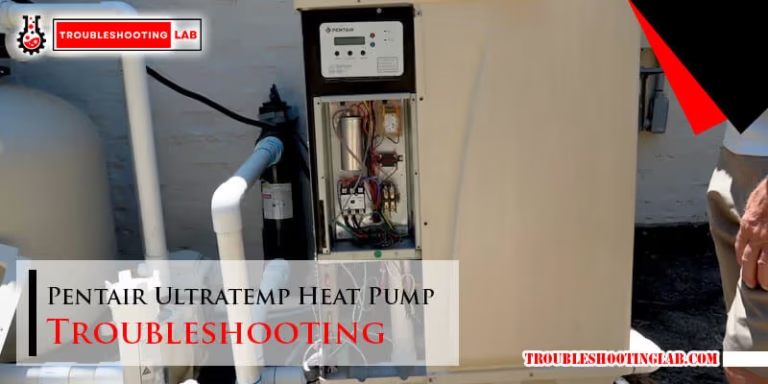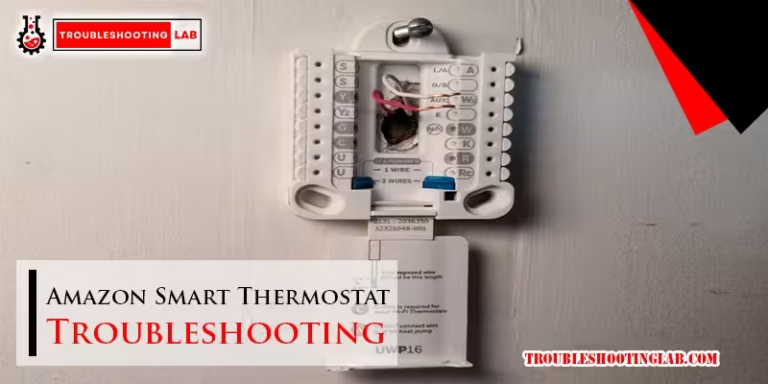Bryant Plus 80 Furnace Troubleshooting: Expert Tips & Fixes
Is your Bryant Plus 80 furnace acting up? Don’t worry—you’re not alone.
When your furnace isn’t working as it should, it can leave you feeling frustrated, especially on those chilly days when you need it the most. The good news is, many common issues can be fixed without calling in a professional.
By understanding some simple troubleshooting steps, you could save yourself time, money, and the stress of a freezing home. In this guide, we’ll walk you through practical tips to identify and fix common problems with your Bryant Plus 80 furnace. Whether it’s unusual noises, inconsistent heating, or an unresponsive system, you’ll find clear solutions to get your furnace back on track. Let’s dive in—you’ve got this!
Common Issues With Bryant Plus 80 Furnace
The Bryant Plus 80 furnace is a reliable heating system. Yet, like any appliance, it can face some common issues. These problems might disrupt comfort and energy efficiency. Understanding these issues helps in identifying solutions quickly. Below are some frequent problems and their possible causes.
Furnace Not Turning On
This is a common issue many homeowners face. Check the thermostat settings first. Ensure it is set to “heat” and the temperature is correct. Inspect the power supply to the furnace. A tripped circuit breaker could be the culprit. A dirty or faulty pilot light can also prevent the furnace from starting. Regular maintenance can help avoid these issues.
Insufficient Heating
If the furnace runs but does not heat enough, the air filter might be clogged. A dirty air filter blocks airflow, reducing efficiency. Low thermostat settings can also lead to insufficient heating. Check if the furnace is the right size for your home. An undersized furnace struggles to maintain desired temperatures.
Frequent Cycling
Frequent cycling means the furnace turns on and off too often. This can increase energy bills and wear out the system. A clogged air filter is a common cause of this problem. Thermostat malfunctions can also lead to frequent cycling. Ensure the thermostat is installed away from heat sources. An oversized furnace may also cycle too frequently.
Unusual Noises
Loud or strange noises from the furnace indicate potential problems. Rattling sounds might mean loose parts inside the system. Banging or popping noises could signal ductwork issues or delayed ignition. Whistling sounds often result from restricted airflow. Addressing these noises early can prevent major repairs.

Credit: www.scribd.com
Inspecting The Thermostat
The thermostat plays a key role in the Bryant Plus 80 furnace’s performance. A malfunctioning thermostat can disrupt heating and cooling cycles. Regular inspection can help identify issues early. This ensures your furnace works efficiently and keeps your home comfortable.
Checking Power Supply
Ensure the thermostat is receiving power. Look for any disconnected wires or loose connections. If the thermostat screen is blank, check your home’s circuit breaker. Reset it if tripped. Verify that the fuse is intact. Replace it if damaged. A steady power supply is necessary for proper thermostat function.
Verifying Thermostat Settings
Confirm that the thermostat settings match your desired temperature. Ensure the mode is set to “Heat” for furnace operation. Check if the temperature setting is higher than the current room temperature. Review the programmable schedule to ensure it aligns with your heating needs. Correct settings can prevent unnecessary furnace cycles.
Replacing Dead Batteries
Many thermostats rely on batteries to operate. Weak or dead batteries can affect performance. Remove the thermostat cover and inspect the batteries. Replace old batteries with new ones. Use high-quality batteries for better reliability. Regular battery checks can prevent unexpected malfunctions.
Filter And Airflow Problems
Filter and airflow problems can cause your Bryant Plus 80 furnace to underperform. Blocked filters and poor airflow strain the system and reduce efficiency. Addressing these issues quickly can help maintain comfort and save energy.
Identifying A Clogged Filter
A clogged filter is one of the most common furnace problems. Dust, dirt, and debris can block airflow, forcing your furnace to work harder. Signs of a clogged filter include weak airflow, uneven heating, or unusual noises. Check the filter monthly during heavy use periods like winter.
Replacing Furnace Filters
Replacing the filter is a simple yet important maintenance task. Start by turning off the furnace to ensure safety. Locate the filter, usually found near the blower compartment. Remove the old filter and check its size, as it’s printed on the frame. Install a new filter with the arrows pointing toward airflow direction. Always use the right filter type for your furnace.
Ensuring Proper Airflow
Proper airflow is crucial for your furnace to run efficiently. Keep vents and registers open and unobstructed. Move furniture, rugs, or curtains that block airflow. Clean the vents regularly to remove dust and debris. Good airflow reduces strain on the furnace and improves heating performance.

Credit: www.reddit.com
Pilot Light And Ignition System
When your Bryant Plus 80 furnace isn’t firing up, the pilot light and ignition system are often the first places to check. These are critical components that ensure your furnace can ignite and produce heat. Whether you’re dealing with an older model with a standing pilot light or a newer system with electronic ignition, understanding the basics can save you a lot of frustration.
Relighting The Pilot Light
If your furnace has a standing pilot light and it’s out, relighting it is often a quick fix. Start by locating the pilot light assembly, which is usually near the bottom of the furnace. Turn the gas control knob to the “off” position and wait a few minutes to let any residual gas disperse.
Once it’s safe, turn the knob to “pilot” and hold down the reset button while using a lighter or match to ignite the pilot. Keep holding the button for 30-60 seconds to ensure the flame stays lit. If it goes out again, you might have a dirty pilot or a faulty thermocouple that needs attention.
Troubleshooting Electronic Ignition
Many Bryant Plus 80 furnaces use electronic ignition instead of a standing pilot. If your furnace isn’t starting, the issue might lie with the ignitor. Look for signs of wear, cracks, or damage on the ignitor, which is usually located near the burners.
A faulty ignitor can often be replaced easily, but make sure to cut the power to the furnace before handling it. You can also test the ignitor using a multimeter to see if it’s receiving power. If it’s not, you may need to check the control board or call in a professional.
Addressing Gas Supply Issues
If neither the pilot light nor the electronic ignition is working, the problem could be with your gas supply. First, check that the gas valve is open and the supply line is not obstructed. A closed valve or kinked line can prevent the furnace from receiving gas.
If you suspect a gas pressure issue, it’s best to contact your gas provider to rule out external supply problems. Never attempt to repair a gas line yourself unless you’re certified to do so. Safety should always come first when dealing with gas-powered appliances.
By tackling these common issues, you can often restore your furnace to working order without too much hassle. Have you ever had to troubleshoot your furnace? Share your experience in the comments below—your insights might help someone else out!
Blower Motor Troubles
Your Bryant Plus 80 furnace is essential for keeping your home warm during cold months, but blower motor troubles can quickly turn comfort into frustration. The blower motor is the heart of your furnace’s airflow system, pushing heated air through the ducts to your living spaces. If it malfunctions, you’ll likely notice uneven heating or hear strange noises. Tackling blower motor issues is easier than you might think, and understanding the basics can save you time, money, and hassle.
Recognizing Motor Malfunctions
How do you know if your blower motor is acting up? Pay attention to unusual sounds like grinding, squealing, or rattling. These noises often signal worn-out bearings or loose components.
Another sign is weak airflow from your vents. If your furnace is running, but rooms aren’t warming up evenly, the motor could be struggling to push air efficiently. Check your thermostat and filters first, then look into the motor.
Does your furnace shut off unexpectedly? Overheating due to motor strain can trigger safety shutdowns. Addressing these symptoms early prevents further damage.
Lubricating Blower Components
Lubrication is key to extending your blower motor’s life. Many older Bryant Plus 80 furnaces use motors with oil ports, which require regular attention.
Locate the ports near the motor shaft and add a few drops of lightweight machine oil. Avoid over-lubricating, as excess oil can attract dust and gum up the motor.
If your motor doesn’t have oil ports, it’s likely sealed and doesn’t need lubrication. Always check your furnace manual to confirm the type of motor you have.
Replacing A Faulty Blower Motor
If your blower motor has completely failed, replacement might be necessary. Start by turning off power to your furnace. Safety first!
Disconnect the wiring harness and remove mounting screws to free the motor. Take note of how everything is connected to ensure easy reassembly.
When buying a replacement motor, match the specifications like voltage, horsepower, and speed. Installing the wrong motor can cause performance issues or further damage.
Once installed, test your furnace to ensure proper airflow and functionality. A new blower motor often restores warmth and quiet operation.
Blower motor troubles might sound intimidating, but with a little attention and care, you can tackle these issues head-on. Have you ever fixed a blower motor yourself? Share your experiences or challenges in the comments below!
Heat Exchanger Concerns
The heat exchanger is one of the most vital components of your Bryant Plus 80 furnace. It’s responsible for transferring heat from the burner to the air that warms your home. However, if it’s damaged, it can cause serious safety issues and affect your furnace’s performance.
Spotting Cracks Or Damage
Cracks or holes in the heat exchanger often aren’t obvious at first glance. Look for signs like uneven heating, unusual noises, or an increase in your energy bills. A cracked heat exchanger might also emit a strange smell, often similar to formaldehyde.
Visual inspections can be tricky without the right tools. Use a flashlight to check for visible cracks or soot buildup. If you notice discoloration or rust, this might indicate damage beneath the surface.
Did you know that even small cracks can lead to major problems over time? Don’t ignore these warning signs, as they could worsen quickly.
Understanding Safety Risks
A damaged heat exchanger can leak harmful gases, including carbon monoxide, into your home. This colorless, odorless gas is dangerous and can be life-threatening if undetected. Do you have a functioning carbon monoxide detector? If not, now is the time to install one.
You might also experience symptoms like headaches, dizziness, or nausea if exposed to carbon monoxide. These symptoms should never be ignored. Protecting your family’s safety should always come first.
Additionally, a compromised heat exchanger can reduce your furnace’s efficiency. That means higher heating costs and less warmth when you need it most.
When To Call A Professional
If you suspect heat exchanger damage, don’t try to fix it yourself. These repairs require specialized tools and expertise. A qualified HVAC technician can perform a thorough inspection and recommend the best course of action.
Call a professional immediately if you notice cracks, strange smells, or unexplained health symptoms. It’s better to address the issue early than face more costly repairs or safety risks later.
Routine maintenance can help catch heat exchanger problems before they escalate. Schedule an annual furnace tune-up to keep your Bryant Plus 80 running smoothly and safely.
So, when was the last time your furnace was inspected? If it’s been over a year, it’s time to make that call!
Resetting The Furnace
Resetting your Bryant Plus 80 furnace can solve many common issues, especially if the furnace suddenly stops working. Sometimes, a simple reset is all it takes to get your heating system back on track. But where do you start, and how do you do this safely? Let’s break it down.
Locating The Reset Button
The reset button is typically located near the blower motor on most Bryant Plus 80 furnaces. It’s often a small, red or yellow button designed to be easily noticeable.
To find it, open the access panel of your furnace. Look near the motor housing or on the control board. If you’re unsure, consult your furnace’s user manual for a diagram.
Before touching anything, make sure the furnace is completely turned off. Safety first.
Steps To Safely Reset
Resetting your furnace is a simple process, but it’s important to follow steps carefully to avoid damaging the system.
- Turn off the furnace power switch, usually located on the side of the unit.
- Press and hold the reset button for about 10-30 seconds. A click or beep might indicate the reset is complete.
- Restore power to the furnace and wait for it to start up. Listen for signs that it’s functioning normally, like the sound of the blower kicking in.
If the furnace doesn’t restart or the problem persists, don’t press the reset button repeatedly. This can overload the system.
When Resetting Doesn’t Work
What happens if resetting doesn’t fix the issue? This could be a sign of a deeper problem, like a clogged air filter, thermostat malfunction, or even a damaged motor.
Start by checking basic issues. Is the thermostat set correctly? Is the filter clean? These small fixes often resolve the problem.
If everything looks fine but your furnace still won’t work, it might be time to call a professional technician. They can pinpoint and fix issues that go beyond simple troubleshooting.
Have you ever needed to reset your furnace in the middle of winter? It’s a stressful situation, but knowing these steps can save you time and frustration. Next time your Bryant Plus 80 acts up, you’ll know exactly where to start.
Routine Maintenance Tips
Keeping your Bryant Plus 80 furnace in top shape doesn’t have to be complicated. Routine maintenance ensures your furnace runs efficiently, keeps your home warm, and avoids costly repairs. Let’s break down practical tips for maintaining your furnace.
Scheduling Regular Inspections
Regular inspections are your first line of defense against unexpected breakdowns. Set a reminder to schedule a professional furnace check-up at least once a year—ideally before winter starts. A trained technician can identify issues early, saving you money and keeping your furnace running smoothly.
Don’t wait until your furnace stops working to call for help. Preventive inspections cost less than emergency repairs. Plus, a well-maintained furnace runs more efficiently, cutting down your energy bills.
Cleaning Furnace Components
Dust and dirt are the enemies of your furnace’s efficiency. Cleaning your furnace components regularly, like the air filters and blower motor, can make a huge difference. Dirty filters restrict airflow, forcing your furnace to work harder than it should.
Change your air filter every one to three months, depending on usage. If you have pets or allergies, you might need to change them more often. A clean furnace not only heats better but also improves your indoor air quality.
Extending Furnace Lifespan
Want your Bryant Plus 80 furnace to last longer? Routine maintenance is the key. Small steps like regular filter replacements, annual tune-ups, and keeping the area around your furnace clean can add years to its lifespan.
Think of your furnace as an investment—it pays off when it works efficiently for years. Avoid overworking it by setting your thermostat wisely and addressing minor issues immediately. A little care goes a long way in keeping your furnace reliable.
What maintenance habit can you start today to keep your furnace in top condition? Small actions can prevent big problems down the road.
When To Seek Professional Help
Dealing with a Bryant Plus 80 furnace that’s not performing as expected can be frustrating. While some issues can be resolved with simple fixes, others require expertise and professional tools. Knowing when to call a professional can save you time, money, and unnecessary stress.
Recognizing Complex Issues
Not all furnace problems are straightforward. If your furnace shuts off unexpectedly, fails to heat your home evenly, or makes strange noises, these may indicate deeper issues. For example, a persistent clunking sound might point to a failing blower motor, something you shouldn’t handle yourself.
Another red flag is when your furnace cycles on and off too frequently or fails to ignite altogether. These could be signs of electrical or gas valve issues. Attempting to repair these without proper knowledge can be dangerous and might even void your warranty.
If you’ve already replaced the filter, checked the thermostat, and ensured the power supply is on, yet the furnace still misbehaves, it’s time to call a professional. Don’t wait until the issue worsens or causes more damage to your system.
Finding A Trusted Hvac Technician
Choosing the right technician can feel overwhelming. Start by asking for recommendations from friends, family, or neighbors who’ve had similar furnace repairs done. Online reviews on platforms like Google or Yelp are also great for getting honest feedback.
Look for licensed and insured HVAC professionals. A certified technician will have the skills to diagnose and fix your furnace properly. Some companies even offer guarantees on their work, giving you peace of mind.
Before hiring, don’t be afraid to ask questions. How long have they worked with Bryant furnaces? Do they offer a free diagnosis or charge for initial inspections? Their answers will help you gauge their expertise and transparency.
Costs Versus Benefits Of Repairs
When the repair costs start adding up, it’s natural to wonder if fixing your furnace is worth it. A good rule of thumb is to compare the repair cost to the price of a new furnace. If the repair is more than 50% of the replacement cost and your furnace is over 10 years old, replacement might be the smarter choice.
Also, consider energy efficiency. An older furnace may cost you more in energy bills even after it’s repaired. Investing in a newer, more efficient model could save you money in the long run.
However, if the issue is minor, like replacing a capacitor or cleaning a clogged burner, repairs are often the most cost-effective option. Always ask for a detailed estimate and weigh the benefits before making a decision.
Have you ever tried fixing a furnace problem yourself and ended up regretting it? Knowing when to call a professional can make all the difference in keeping your home warm and safe. Don’t hesitate to seek help when you need it.

Credit: www.youtube.com
Conclusion
Troubleshooting your Bryant Plus 80 furnace doesn’t have to feel overwhelming. Start with basic checks like filters and power connections. Many issues can be fixed with simple steps. For complex problems, contacting a professional is the best choice. Regular maintenance helps prevent future breakdowns and keeps your furnace running efficiently.
Always prioritize safety when handling furnace issues. A well-maintained furnace not only provides comfort but also saves energy. With patience and care, you can handle minor problems effectively. Stay proactive and address issues early to avoid bigger repairs. A warm, comfortable home starts with a reliable furnace.





